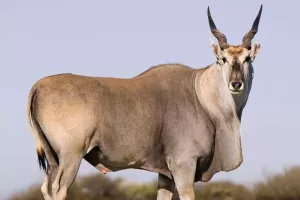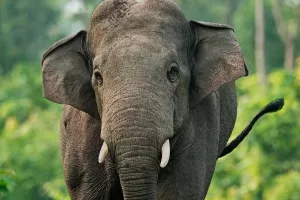Dragonflies – while the origin of their name is a mystery, it is an appropriate description of these voracious predators. Both the aquatic nymphs and the flying adults are some of the largest and most aggressive insect hunters in the world.
Dragonfly, (suborder Anisoptera), also called darner, devil’s arrow, or devil’s darning needle, any of a group of roughly 3,000 species of aerial predatory insects most commonly found near freshwater habitats throughout most of the world. Damselflies (suborder Zygoptera) are sometimes also called dragonflies in that both are odonates (order Odonata).
Dragonfly species (Anisoptera) are characterized by long bodies with two narrow pairs of intricately veined, membranous wings that, while generally transparent, may have coloured markings. Unlike damselflies, the front and rear wing pairs are shaped differently. In addition, dragonflies rest with their wings spread horizontally, rather than held vertically against each other (with the exception of one very small family, Epiophlebiidae). Dragonflies have a more powerful build and are generally much stronger fliers than damselflies. The globe skimmer (or wandering glider, Pantala flavescens), a migratory dragonfly, for example, makes an annual multigenerational journey of some 18,000 km (about 11,200 miles); to complete the migration, individual globe skimmers fly more than 6,000 km (3,730 miles)—one of the farthest known migrations of all insect species. Dragonflies also have huge bulging eyes that occupy most of the head, giving some a field of vision approaching 360 degrees.
The winged adults are diversely coloured in a variety of shades ranging from metallic to pastel. Compared with other insects, they are large, with some having wingspans of up to 16 cm (about 6 inches). Even the smallest species are about 20 mm (0.8 inch) across. As well as being extremely agile fliers, they are also among the fastest insects. Dragonfly wing muscles must be warm to function optimally, and so, if cool, the insect often engages in wing-whirring and basking in the sun to generate heat before taking flight. The dragonfly’s speed and agility contribute to its being one of the most effective aerial predators.
Dragonfly nymphs live in the water and usually hang out on aquatic vegetation waiting for their prey, which is virtually any animal small enough to grab. When prey gets close enough, the nymph unfurls its labium (mouthpart that shoots out past the head) to capture its prey. Larger dragonfly nymphs may even eat minnows or tadpoles.
Adult dragonflies will also eat any insect they can catch. While they usually eat mosquitoes and midges, they’ll also eat butterflies, moths, bees, flies and even other dragonflies. Larger dragonflies will eat their own body weight in insect prey every day.
They are extremely agile and catch their prey midair. Most dragonflies fly an average of 10 miles per hour, but large species can top out at 30 miles per hour. They are able to fly backwards, hover in place, turn in tight spots, and accelerate instantly.
Dragonflies can create a type of basket with their legs to scoop up a bug and put it in their mouth without stopping. Other dragonflies simply open their mouths to catch food as they fly. Yet other dragonflies glean their food, which means they catch the insects that perch above plant stems and leaves. Immature adults will eat caterpillars hanging from trees.
Many cultures have historically revered dragonflies. In Japan, the dragonfly symbolizes focused endeavor and vigilance because of its manner of moving up, down and sideways while continuing to face forward; Samurai warriors fashioned helmets in the shape of dragonflies, which were symbols of invincibility. To some Native American tribes, dragonflies symbolized spring and good harvests.


